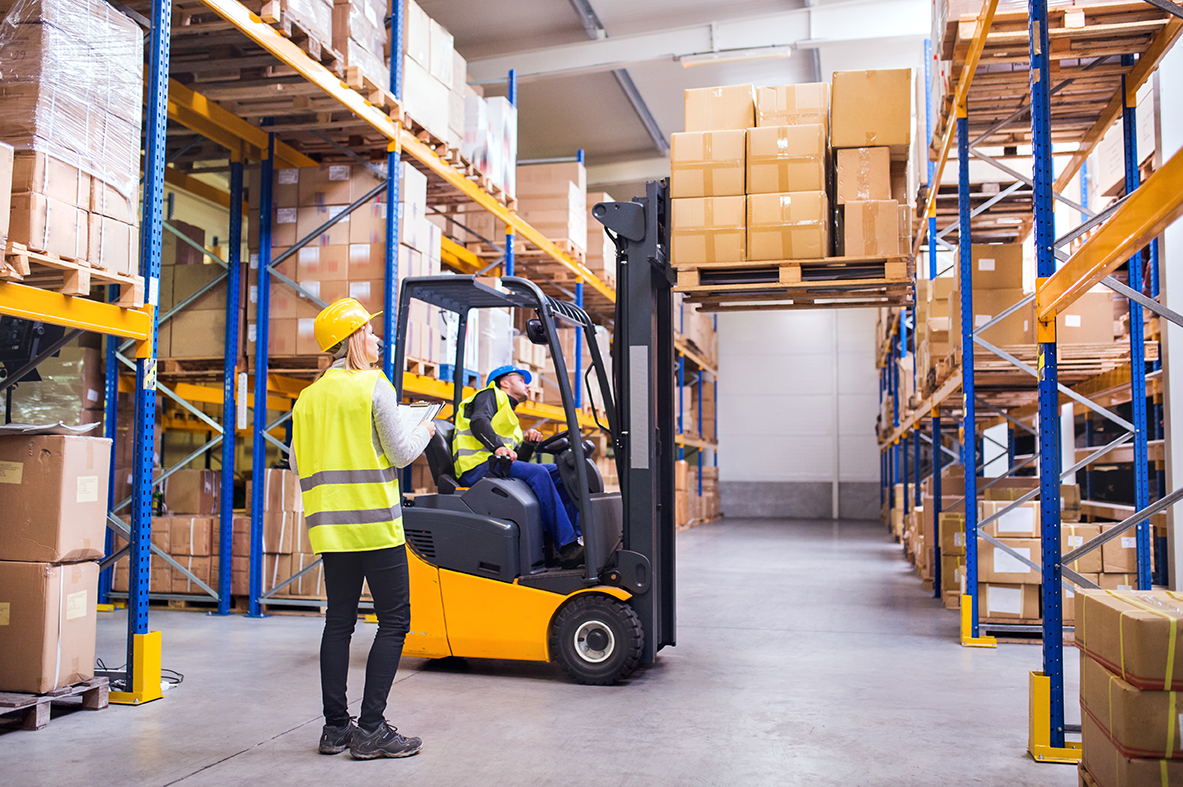How Pallet Inverters Solve OSHA Compliance and Labor Cost Reduction in United States?
Manual pallet handling is a constant struggle on the factory floor. It's slow, physically demanding, and a major source of worker injuries. In the United States, this directly translates into high workers' compensation claims and the constant risk of costly OSHA fines. You see your team struggling with heavy loads, you worry about the next back injury report, and you know there has to be a better way to manage this process without hurting your people or your bottom line. The good news is, there is a powerful and straightforward solution: the pallet inverter.
Pallet inverters directly solve OSHA compliance issues by eliminating the need for manual lifting, bending, and twisting, which are the primary causes of musculoskeletal disorders (MSDs) that OSHA targets. At the same time, they drastically reduce labor costs by automating the transfer of goods, enabling a single operator to perform the task of several workers more quickly, safely, and without the risk of product damage.
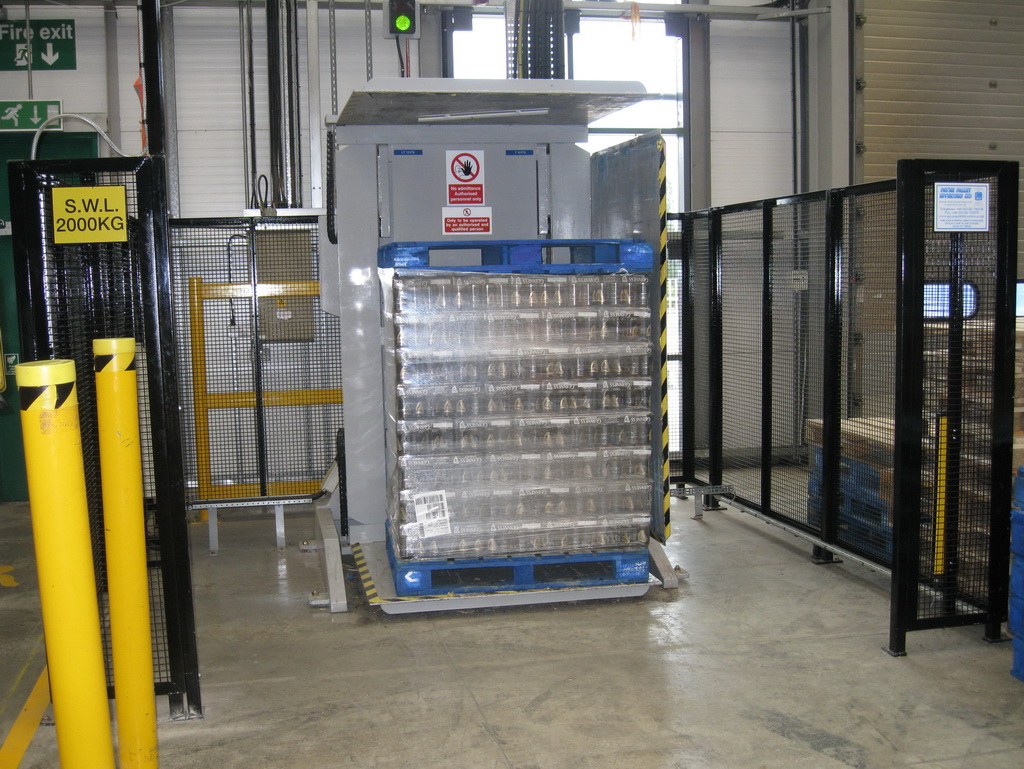
I’ve made a bold claim, but it's one I've seen proven time and again in facilities across the country. As an engineer who has spent his life on the factory floor, first as an employee and later as a factory owner, I understand the pressure to improve safety while also keeping a close eye on the budget. It's a tough balance. But this is one of those rare investments where safety and profitability go hand in hand. Let's break down exactly how this piece of equipment achieves these results.
How Does a Pallet Inverter Directly Address OSHA's Ergonomic Guidelines?
OSHA guidelines can feel like a complex web of rules, and the fear of a surprise inspection or a serious injury is real for any plant manager in the United States. You're constantly thinking about ergonomics, proper lifting techniques, and the potential for fines that can hurt your business. When an injury does happen, it triggers a chain reaction of lost workdays, insurance paperwork, and a drop in team morale. You feel the pressure to find a solution that isn't just a temporary fix, but a fundamental improvement to your process. A pallet inverter is that fundamental improvement—it's what OSHA refers to as an engineering control, the most effective way to eliminate a hazard.
A pallet inverter directly addresses OSHA's ergonomic guidelines by mechanizing the entire process of load transfer. It physically removes the need for employees to perform hazardous motions like manually lifting heavy boxes, bending at the waist, twisting their torso, or reaching awkwardly to handle goods. By doing this, it systematically mitigates the key risk factors associated with work-related musculoskeletal disorders (WMSDs), which are a major focus for OSHA inspections and citations.
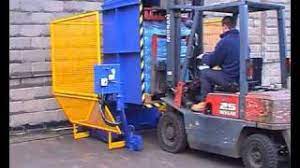
Eliminating Awkward Postures and Repetitive Motions
When your team has to manually transfer a load from one pallet to another, they are forced into harmful positions. They bend down to pick up the bottom layer of boxes, twist their bodies to move the product, and repeat these motions dozens or hundreds of time per shift. The human body is not designed for this kind of work. I remember visiting a client's facility in Ohio where two of their most experienced warehouse workers were on light duty due to back strain. Their job was to re-palletize goods for export. The cost in lost productivity and workers' comp was adding up quickly. A pallet inverter solves this by securing the load and using mechanical power to rotate it 180 degrees. The operator simply uses controls to perform the action, standing upright and free from strain. The machine does all the bending and turning.
Reducing Excessive Force Requirements
OSHA's guidelines are very clear about the dangers of lifting heavy objects. A single box might not seem like much, but lifting a 50-pound box repeatedly throughout a day puts immense stress on the spine and shoulders. A pallet inverter makes the weight of the product irrelevant from a human perspective. The machine's hydraulic or electric system is designed to handle thousands of pounds with ease. An operator can move a 2,500-pound load as easily as a 500-pound one. This completely removes the "excessive force" risk factor from the equation.
A Proactive Engineering Control
OSHA prioritizes hazard controls in a specific hierarchy. The most preferred solution is always an "engineering control," which means designing the problem out of the process itself. Less effective are administrative controls (like job rotation) or Personal Protective Equipment (PPE) (like back braces). A pallet inverter is a textbook example of an engineering control. Instead of just training people how to lift "safely" in a fundamentally unsafe task, you eliminate the unsafe task altogether. This is the most robust and defensible way to prove to OSHA that you have taken concrete steps to protect your workforce.
| OSHA Risk Factor | Manual Pallet Transfer | Pallet Inverter Solution |
|---|---|---|
| Awkward Postures | Constant bending, twisting, reaching. | Operator stands upright; machine rotates. |
| Excessive Force | Manual lifting of individual items or layers. | Hydraulic/electric power handles the entire load. |
| Repetitive Motions | Hundreds of lifting/placing motions per pallet. | A single, automated cycle per pallet. |
| Hazard Control Type | Relies on training/PPE (less effective). | Engineering control (most effective). |
What is the Real ROI of a Pallet Inverter When Factoring in Labor Savings?
Every business owner, especially someone like Javier who runs a large-scale operation, knows that any new piece of equipment comes with a price tag. The first question is always, "How long until this investment pays for itself?" It's easy to look at the initial cost and hesitate. You have to justify the capital expenditure, and that means looking beyond the sticker price to understand the full financial picture. You might think the main benefit is just moving pallets faster, but the true return on investment (ROI) is much deeper, combining direct labor savings with powerful indirect benefits that often get overlooked.
The real ROI of a pallet inverter is calculated from a mix of direct and indirect labor savings. The direct savings are easy to see: it reduces the number of employees required for pallet exchange tasks, which immediately cuts costs related to wages, benefits, and payroll taxes. The indirect savings come from significantly lower expenses related to workers' compensation claims, reduced employee turnover and recruitment costs, and added gains from increased throughput and less product damage.
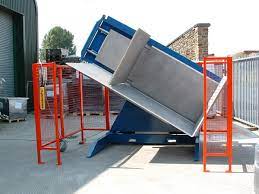
Direct Labor Cost Reduction
Let's look at a common scenario in a US warehouse. To manually transfer a full pallet of goods, you might need two or three workers. The process could take them 15-20 minutes, including unwrapping, moving the product, and re-wrapping. Now, consider a pallet inverter. A single operator can perform the same task in about 2 minutes. The math is simple and powerful. You are re-assigning one or two workers to more value-added tasks while completing the transfer in a fraction of the time. When I was running my own factory, every minute of labor counted. We had to be efficient to compete. A machine that allows one person to do the work of three is not just an improvement; it's a game-changer for your operational budget.
Indirect Savings: The Hidden ROI Boosters
This is where the financial case becomes even stronger.
- Reduced Workers' Compensation: A single back injury claim in the United States can cost tens of thousands of dollars in medical bills and lost wages, not to mention the impact on your insurance premiums. By eliminating the root cause of these injuries, a pallet inverter acts as an insurance policy against these unpredictable and significant costs.
- Lower Employee Turnover: Manual handling jobs have high turnover rates. They are physically draining, and employees often leave for less demanding work. The cost to recruit, hire, and train a new employee is substantial. By creating a safer, less strenuous work environment, you improve employee retention and reduce these recurring costs.
- Decreased Product Damage: When goods are moved by hand, there is always a risk of them being dropped, dented, or damaged. A pallet inverter handles the entire load in one smooth, controlled motion. The clamping mechanism secures the product, virtually eliminating damage during the transfer process. For high-value goods, this saving alone can be significant.
| ROI Calculation Element | Example Annual Figure (USD) | Explanation |
|---|---|---|
| Direct Labor Savings | $50,000+ | Re-assigning 1 worker ($25/hr all-in cost) to a value-added role. |
| Injury/Comp Savings | $15,000 | Average cost avoidance of one minor injury claim per year. |
| Reduced Product Damage | $5,000 | Saving 0.1% of product value on a $5M annual throughput. |
| Reduced Turnover Costs | $4,000 | Avoiding the cost to re-hire and train one employee per year. |
| Total Annual Savings | $74,000 | The combined, realistic financial impact of the machine. |
With total annual savings like this, a pallet inverter that costs $30,000 to $60,000 can often pay for itself in less than a year.
Can Pallet Inverters Handle a Variety of Product Types in a US-based Warehouse?
You look around your warehouse and see a huge variety of products. You have neatly stacked boxes of finished goods, heavy bags of raw materials, pails of liquid, and maybe even fragile items that need special care. A major concern before investing in new automation is its flexibility. You worry that you'll buy a machine that works perfectly for one product line but is useless for another, forcing it to sit idle and take up valuable floor space. It's a valid fear. A machine needs to be a versatile workhorse, not a one-trick pony. The great thing about modern pallet inverters is that they are specifically designed to be that workhorse.
Yes, modern pallet inverters are engineered for versatility and can safely handle a very wide range of product types found in US warehouses. They achieve this through key design features like adjustable clamping pressure, a wide opening range for different load sizes, and various loading methods (e.g., forklift or pallet jack access). This allows them to securely invert everything from stable boxes and pails to unstable sacks and bags without causing damage.
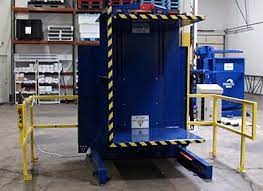
Adjustable Clamping Pressure: The Key to Versatility
This is the most critical feature for handling different products. A pallet inverter doesn't just use brute force. It uses a controlled, adjustable hydraulic or pneumatic system. For a heavy, stable load of steel parts, you can set the pressure high for a very firm grip. But for a pallet of bottled beverages or sensitive electronics, you can dial the pressure down to be just firm enough to secure the load without crushing the contents. This fine-tuning is what makes the machine so adaptable. It’s the difference between a hammer and a surgical tool. At SHJLPACK, part of our "TOTAL SOLUTION" philosophy is to understand a client's products first, so we can ensure the machine is calibrated perfectly for their needs.
Accommodating Different Load Sizes and Shapes
Pallet inverters are not one-size-fits-all. They come in models with different opening ranges to accommodate standard US pallet sizes (like 48"x40") as well as oversized or smaller custom pallets. The clamping tables are large and flat, providing even support across the entire top and bottom of the load. This is especially important for products that are not in rigid boxes, like large sacks of grain or chemicals. The even pressure distribution prevents the sacks from shifting or bursting, a common problem with manual handling.
Loading and Unloading Flexibility
Warehouses in the United States have different layouts and equipment. Some operations rely exclusively on forklifts, while others use manual or electric pallet jacks for moving goods. Pallet inverters are designed to fit into these existing workflows. Some models are loaded at ground level, allowing a pallet jack to roll right in. Other models are raised, designed for fast loading and unloading with a forklift. This flexibility means you don't have to re-organize your entire warehouse to accommodate the machine; you choose the machine that fits your process.
| Product Type | Key Machine Feature Needed | Suitability |
|---|---|---|
| Boxed Goods | Even clamping plates, standard opening range. | Excellent |
| Sacks / Bags | Adjustable clamping pressure, large tables. | Very Good |
| Drums / Pails | Strong construction, high clamping force. | Excellent |
| Fragile Items | Low-end pressure adjustment, smooth rotation. | Very Good |
| Bottled Goods | Side support walls (optional), gentle clamping. | Good |
Beyond Cost and Safety, What Other Operational Benefits Do Pallet Inverters Offer?
We have established the powerful case for pallet inverters based on OSHA compliance and labor cost reduction. For many managers, that's enough to justify the investment. But if you're a forward-thinking leader like Javier, you're always looking for a ripple effect. You want to know if a new piece of equipment can deliver benefits across the entire supply chain, not just in one isolated area. You want to know if it can make your whole operation leaner, faster, and more efficient. The answer is a clear yes. The operational benefits of a pallet inverter extend far beyond the initial goals of safety and cost savings.
Beyond cost and safety, pallet inverters provide major operational benefits in three key areas. They improve quality control by giving you easy access to damaged goods anywhere in the stack. They enhance warehouse hygiene by allowing for a quick and sanitary transfer from wood pallets to plastic pallets. And they increase inventory flexibility by making it simple to consolidate partial loads or switch to different pallet types for shipping.
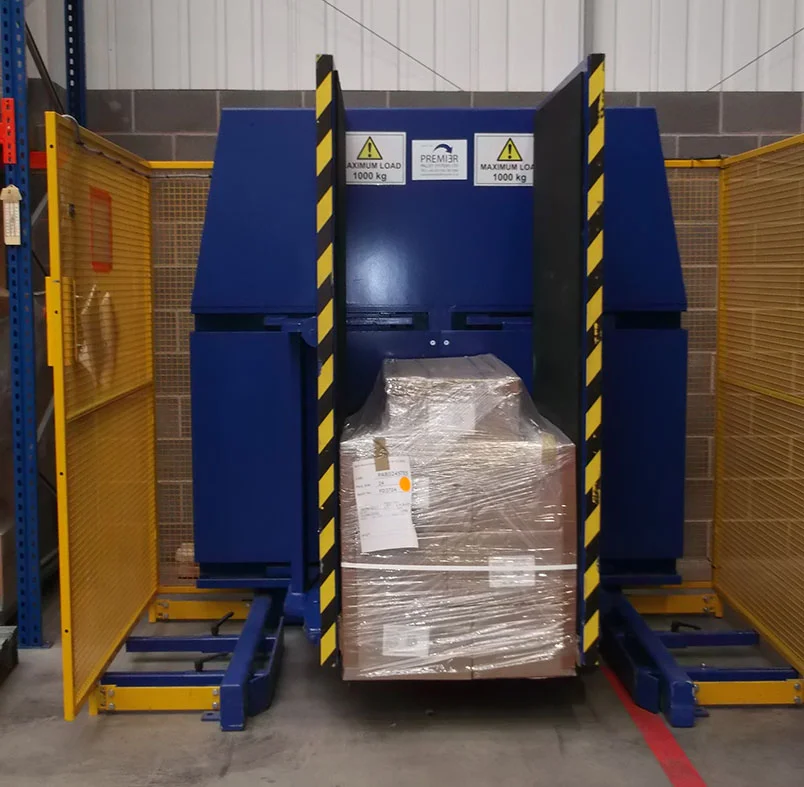
Streamlining Quality Control
Imagine a customer reports a damaged box, and you trace it to the bottom layer of a pallet in your warehouse. Manually, your only option is to have a team un-stack the entire pallet, replace the single damaged box, and then re-stack the whole thing. This is a massive waste of time and labor. With a pallet inverter, the process is simple. You clamp the load, rotate it 180 degrees, and lift off the original pallet. The bottom layer is now the top layer, in perfect position for inspection and replacement. What used to take 30 minutes and two people now takes 3 minutes and one person. This allows for faster response to quality issues and prevents damaged products from ever reaching your customer.
Enhancing Hygiene and Compliance
In many industries in the United States, especially food and beverage or pharmaceuticals, wood pallets are not allowed in clean production areas due to the risk of contamination, pests, or debris. Companies must transfer incoming goods from "dirty" wood pallets to "clean" plastic or aluminum pallets. A pallet inverter is the most efficient and sanitary way to do this. It automates the transfer, keeping manual handling to a minimum and ensuring a clean break between the outside world and your hygienic production zones. This is not just a matter of efficiency; it's a matter of compliance with industry and FDA standards.
Maximizing Warehouse Space and Flexibility
Efficient warehouse management is all about using your space wisely. You often end up with multiple pallets that are only partially full. Consolidating these partial loads by hand is slow and tedious. A pallet inverter makes it easy. You can quickly invert one partial load onto another, combining them into a single, full pallet. This immediately frees up valuable floor space and racking locations. It also gives you flexibility for shipping. If a customer requires a specific type of pallet (e.g., CHEP, or a different size), you can swap the load onto the required pallet in minutes, ensuring smooth and compliant outbound logistics. These small efficiencies, when scaled up in a large operation, lead to significant improvements in overall productivity.
| Operational Benefit | Manual Process Challenge | Pallet Inverter Solution |
|---|---|---|
| Quality Control | Very difficult to access bottom layers. | 180-degree rotation provides instant access to any part of the load. |
| Hygiene Control | Slow, manual transfer risks cross-contamination. | Fast, automated transfer from wood to plastic pallets. |
| Space Optimization | Consolidating partial pallets is labor-intensive. | Quickly combines partial loads, freeing up warehouse space. |
| Shipping Flexibility | Swapping pallet types for customers is slow. | Enables rapid transfer to any required pallet type. |
Conclusion
Pallet inverters are more than machines; they are strategic tools. They boost safety, cut costs, and improve your entire operation, making them a smart investment for any US facility.



